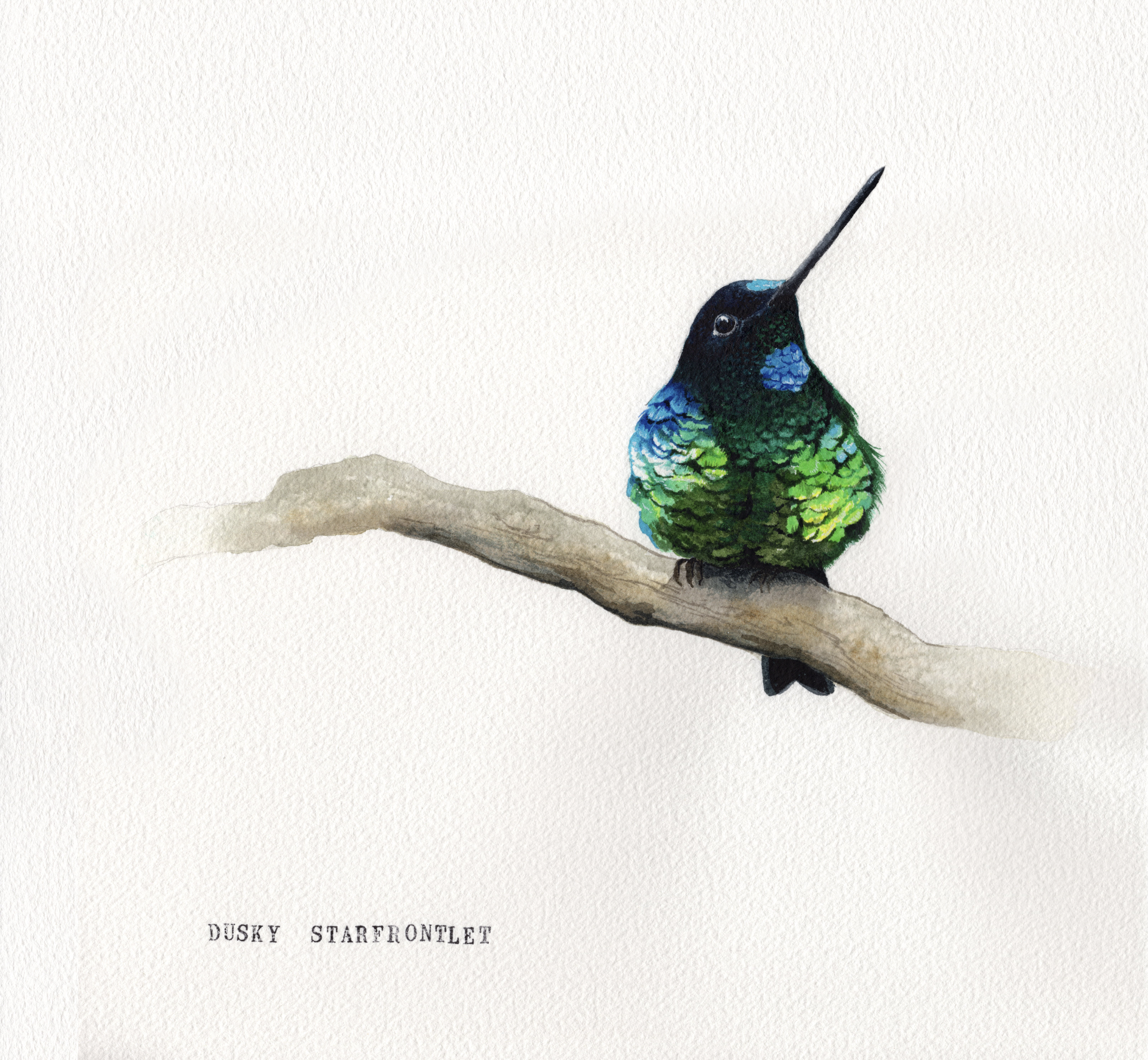VANISHING
An alphabet series of critically endangered birds.
Watercolor sketches: 8x10. By the time this is finished, some of them will be extinct.
Arapripe Manakin
First discovered in only 1996, the Araripe Manakin is one of the most critically endangered birds with less than 200 individuals in the wild (as of 2018). They come from just a 5km by 1km section of the Brazilian Rainforest - much of which was destroyed to build banana plantations and a theme park.
Brazilian Merganser
The Brazilian Merganser is one of the six most threatened waterfowl in the world with possibly as few as 50 breeding pairs in the wild. It fishes in rivers and streams and is highly susceptible to environmental decay. They’ve been driven to the brink of extinction by farming which silts up the water, hydroelectric plants and dams which turn the rivers into silted lakes and robs them of nesting sites. It will be extinct within our lifetime.
Cerulean Paradise Flycatcher
The Cerulean Paradise Flycatcher is one of the rarest birds in the world. It lives in only 5 steep, wooded valleys on a single tiny island in Indonesia. It was previously only known from a single specimen and through extinct until it was rediscovered in 1998. As few as 20 exist in the entire world and its habitat is shrinking due to farming.
Dusky Starfrontlet
One of the rarest of all hummingbirds, the Dusky Starfrontlet lives in only 50 sq. km. in the high Andean loud forests of western Colombia. Less that 250 exist in the world and their numbers are threatened due to habitat loss.
Egyptian Vulture
The sacred and ancient Egyptian Vulture is widespread but endangered due to habitat loss, collisions with power lines, intentional poisoning, lead accumulation from shot in carcasses as well as pesticide accumulation. Captive breeding programs are proving less successful than hoped.





